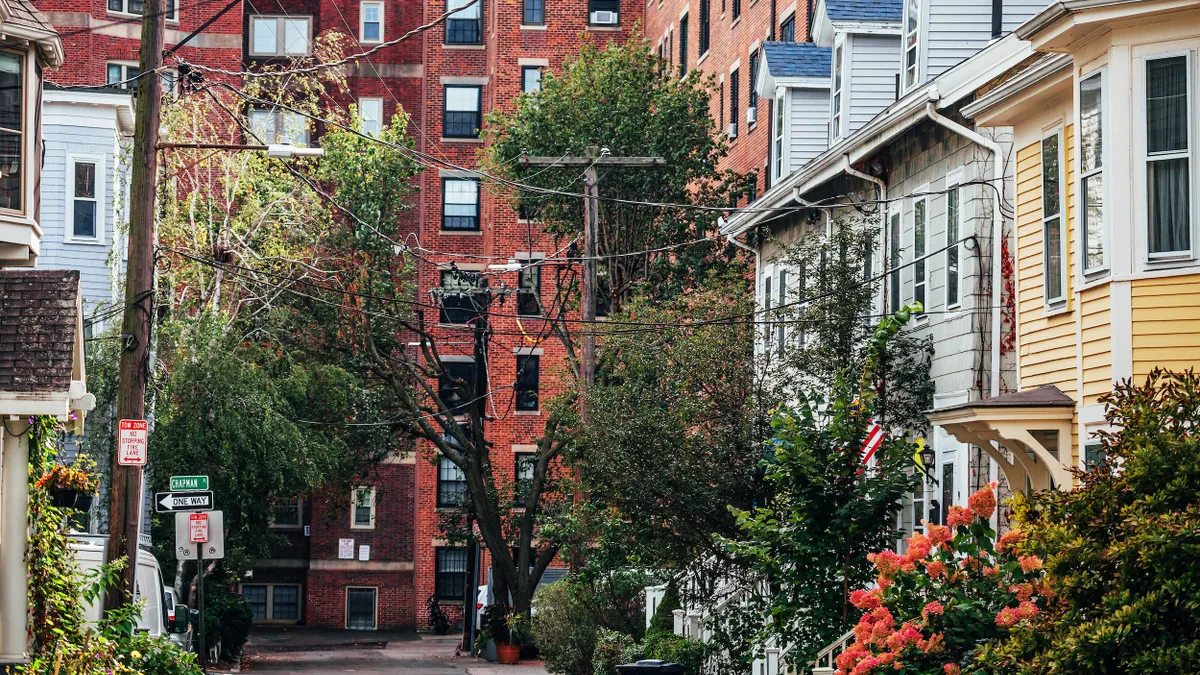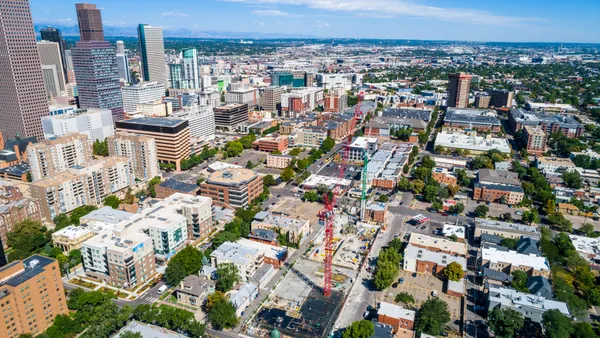Dive Brief:
- Healthy urban forests that look and feel like the wilderness provide more cooling benefits than other green spaces, such as landscaped parks and street trees, according to a study released in July by the New York City-based Natural Areas Conservancy.
- The study — conducted last summer in 12 U.S. cities — finds that on a hot summer day in some cities, the temperature in these urban forests was as much as 10 degrees F cooler than under street trees a few hundred feet away.
- The findings indicate that cities should allocate more resources to caring for urban forests, the study says. Natural areas should also be part of cities’ plans to address urban heat islands, alongside more common practices such as street-tree planting, green roofs and building materials innovation, it says.
Dive Insight:
Urban trees have gotten a good bit of attention — and funding — lately, from everyone from President Joe Biden to Amazon founder Jeff Bezos. The benefits of trees in cities, including their ability to cool neighborhoods, are well-documented. If anything, the urgency to expand urban green spaces in cities has only grown after a summer plagued by extreme heat, which experts say will likely be part of the new normal as climate change worsens.
But as city leaders work to fulfill their promises to increase tree canopy, certain questions remain. For example, do different types of green spaces provide different cooling benefits? The Natural Areas Conservancy set out last summer to answer to that question.
The study is based on land-temperature data from satellites and air-temperature data from sensors placed on trees in Seattle; Minneapolis-St. Paul; New York; Baltimore; Chicago; Miami; Houston; St. Louis; Indianapolis; Billings, Montana; Austin, Texas; and Tampa-Hillsborough County, Florida. These 12 urban areas are all part of the Forests in Cities network, a national coalition of urban forest professionals.
Forested natural areas — characterized by multiple layers of plants and trees of different ages — were 3 to 9 degrees F lower than the average citywide temperature, depending on forest and city type. The coolest type of forest was conifer, with the only studied example Seattle. Forests with wetter conditions, such as forested wetlands and mangrove forests, were also particularly cool.
Landscaped areas, such as bare soil, lawns and street trees, generally had less cooling benefits. In Billings, for example, a forest was over 14 degrees F cooler than a landscaped location at 6 p.m. on Sept. 3, 2022.
Healthy forests were generally cooler than degraded forests during the afternoon, with less temperature variation throughout the day.
“Understanding the relationship between forest condition and cooling impacts is important,” the study says. “Urban forests face many threats including fragmentation and increased pressures from problem species.”
Despite these benefits, the study said urban natural areas are “underfunded and unprotected, leaving them imperiled in cities across the country.” They may be viewed as “weedy” compared with landscaped parks and street trees; cities in the study allocated an average of 4% of park budgets to caring for forests, even though they make up a majority of city parkland.
“We view natural areas as a less well understood but critically important piece of the entire urban forest,” Natural Areas Conservancy Executive Director Sarah Charlop-Powers said Tuesday on the The Brian Lehrer Show. “We view this work as an important puzzle piece in solving the really large and thorny challenge of extreme heat in New York City and in cities across the country.”












